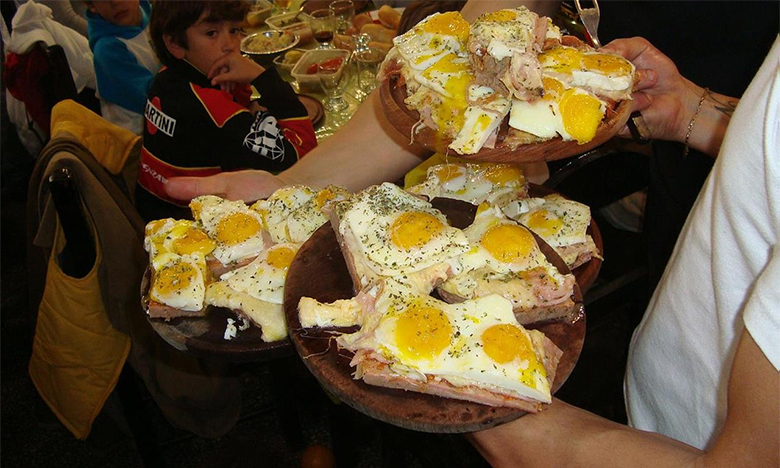One of the things I miss most about living in Argentina is the twice or thrice weekly asados (barbecues). But it’s not the huge hunks of heavily salted beef that I hanker after the most. Instead, it’s the memory of a wacky pizza made by my good friend Mario Edgardo Navarro that really gets me salivating. The toppings are classic: mozzarella, fresh tomatoes, oregano. The base, not so much.
This pizza has a beefy bottom. Matambre, a contraction of the words mata hambre (meaning “hunger killer”), is a long, thin cut of beef that extends from the bottom of the cow’s rib cage along the side of the stomach. American butchers will think you’re describing a flank steak, but matambre is a fattier cut, which crispens up nicely on the fire. Add some pizza toppings and you have a mouthful of cheesy, fatty goodness that could kill even the meanest hunger.
It’s not the kind of thing you can eat much of — probably a good thing considering the amount of cholesterol in a single bite — but it sure is tasty. If you’re imagining a variation of a regular pizza, you’re on the wrong track. Matambre a la pizza is all about that base (no treble), and the toppings need to be kept simple to allow the succulent salty, goodness of the meat to shine through.
A good matambre a la pizza requires time and attention. Mario needed a 1,000-word email and an hour-long Skype call to explain the process, but here is the short version: “Buy yourself a matambre that weighs less than 2 kilograms,” he says, and leave it to soak in a mixture of water, lemon juice and herbs for several hours. Cook it, fat side down, over a sparse smattering of coals before flipping it over. Remove from the grill and add toppings of your choice (Mario prefers Roquefort over mozzarella) to the fatty side. Finally, place a large lid or pizza tray over the entire thing and pop a few coals on top. Within five minutes the cheese should be melted, and the pizza is ready to serve.
Asados are usually big, jovial affairs, and matambre, being an expensive cut, is often served just after the main course when guests’ appetites have sagged somewhat. It’s nearly always washed down with wine — preferably a big, bold Mendoza Malbec — and served with white bread rolls and a simple salad of lettuce, tomatoes and olive oil. “Sometimes, when it’s just my wife and I,” confides Mario, “we eat a whole matambre by ourselves.”
Matambre, which is popular in Uruguay, Chile and even Mexico, can also be served on its own (delicious), baked in a mixture of milk and eggs (a bit weird) or relleno (tightly rolled around a filling of vegetables, hard-boiled eggs and herbs, also delicious). But it’s the memory of matambre a la pizza that I can’t shake. While matambre has been a gaucho favorite since the 1700s, the addition of pizza toppings seems to have come at the turn of the last century when a wave of Italian immigrants flooded the country and, missing the flavors of la patria, made it their own.
If you don’t have your own Mario to cook for you, fret not. He says the dish is served in “any restaurant that has a fire burning all the time.” In other words, you should be able to find it at any parrilla — traditional steakhouses found throughout the country that range from cheap and cheerful to starched-napkin fancy. I asked him for specific recommendations but he said he’s never ordered it out. Of course he hasn’t.

